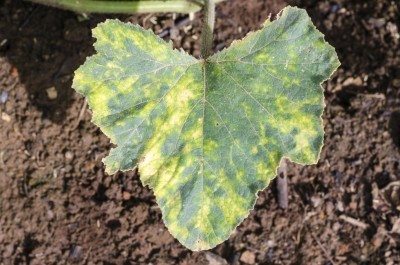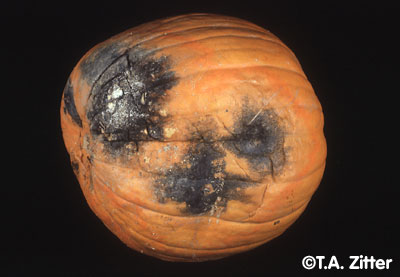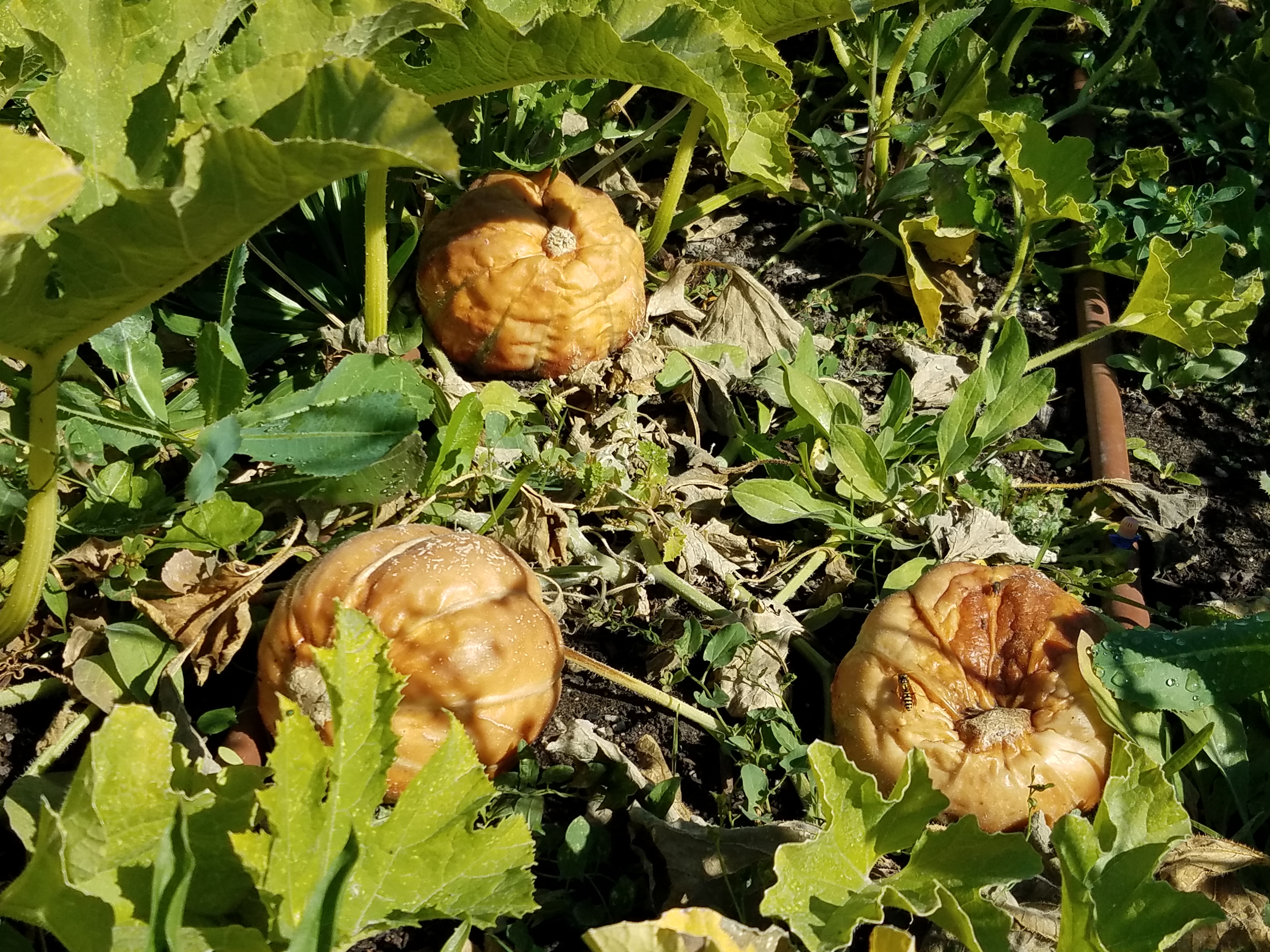In this issue:
- Powdery Mildew: a lost cause on pumpkins at this point in the season
- Watermelon Mosaic Virus (WMV): causing leaf distortion
- Gummy Stem Blight (Black Rot): common throughout Utah
- Phytophthora Fruit Rot: caused by overly wet soil
Powdery Mildew on Pumpkins

Overview
Powdery Mildew is caused by the fungi Podosphaera xanthii and Erysiphe cichoracerarum which affects all cucurbits including pumpkins. The fungal growth occurs on the leaves, stems, and petioles.
Powdery Mildew is best controlled early on, at this point in the growing season control attempts would likely be ineffective.
Management
– Remove early infected leaves as they are encountered.
– Some resistant cultivars are available, especially cucumber.
– Remove old plant debris and volunteers.
– Provide adequate plant spacing.
Additional Resources
Watch for powdery mildew on vine crops (Michigan State Extension)
Powdery mildew of cucurbits (Minnesota Extension)
Watermelon Mosaic Virus (WMV) on Pumpkins

Overview
Watermelon Mosaic Virus (WMV) is a Potyvirus spread by aphids, that affects some cucurbits including pumpkins. Symptoms include growth stunt, leaf malformation, and a yellow-green mottling on the foliage. This disease is common throughout Utah.
Management
– Control nearby weeds.
– Rotate crops every season.
– Plant and grow resistant varieties when they are available.
Additional Resources
Virus Diseases of Cucurbits (Cornell-New York Extension)
Viral infection can lead to traditional pumpkin varieties taking on a new appearance (Michigan State Extension)
Gummy Stem Blight (Black Rot) on Pumpkins

Overview
Gummy stem blight (sometimes referred to as black rot) is caused by fungal pathogen Didymella bryoniae It affects all cucurbits including pumpkins. All the above-ground portions of the plant can become infected. Leaves may develop dark brown circular spots and the fruit develops large necrotic lesions. This is one of the most common diseases in Utah where pumpkins are in a field.
Management
– Rotate out of cucurbits crops for 2-3 years.
– Remove and destroy infected plants.
– Click Here for commercial fungicide options
– Click Here for home fungicide options
Additional Resources
Gummy Stem Blight of Cucurbits (North Carolina State Extension)
Gummy Stem Blight (Cornell – New York Extension)
Phytophthora Fruit Rot on Pumpkins

Overview
Phytophthora fruit rot is caused by various Phytophthoa spp. pathogens that are spread by spores through water or sanitized field equipment. Symptoms include water-soaked spots where the fruit touches the ground and eventually soft decay on the fruit until it eventually rots. This disease is rare in Utah but can be prevalent in locations that are highly irrigated with moist soils.
Management
– Rotate with non-host crops for two years.
– Plant only in well-drained soils and allow the soil to dry between irrigations.
– Clean equipment and tools between fields.
– Remove infected fruits.
– Fungicides are often not necessary in Utah
Additional Resources
Phytophthora on the pumpkin (Cornell – New York Extension)
Managing Phytophthora on Pumpkin/Watermelon (Michigan State Extension)
